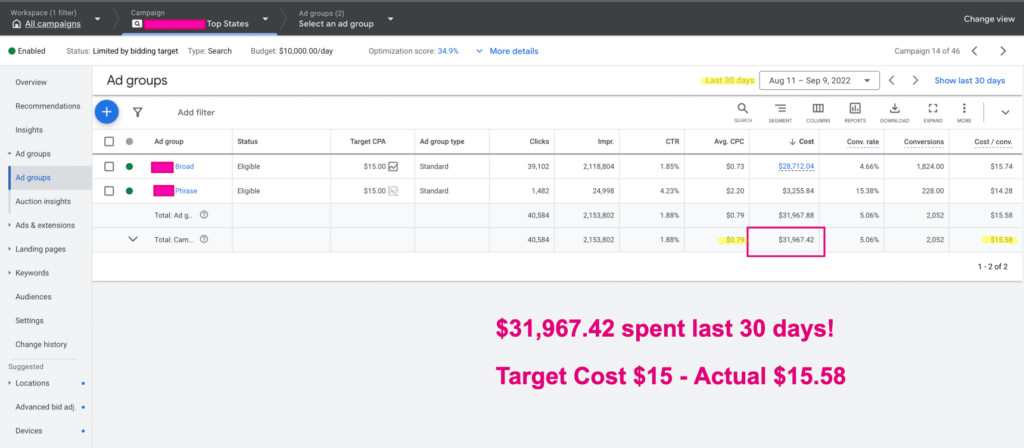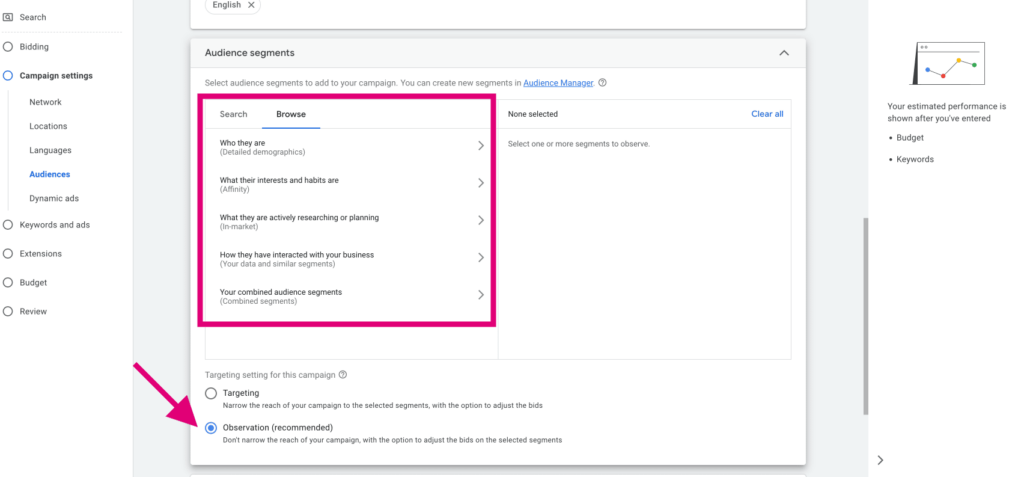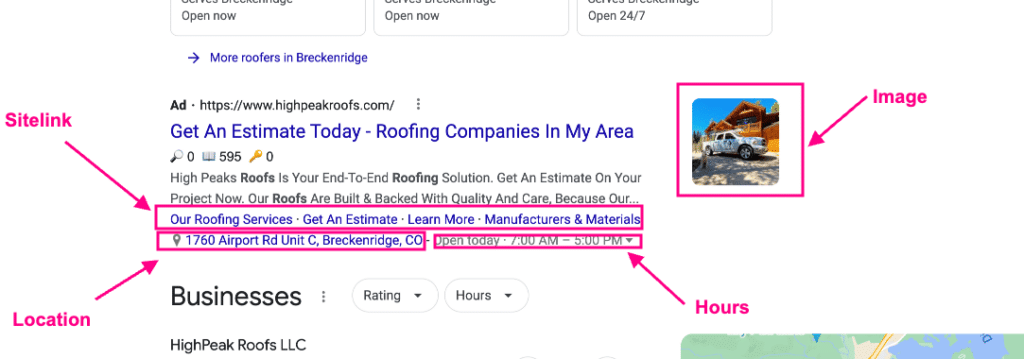True or false… Google processes over 3.5 billion searches every day?
It’s true. Here’s the source!
Many of those searchers have buyer intent or are seeking information that will be used in a purchase decision.
Getting in front of potential consumers when they are engaged and actively seeking out products / services (or information related to it), is an incredibly powerful marketing method. That’s why I spend an incredible amount of money on SEM… just last month I spent over $31,000 on Google Search Ads for one of my campaigns.

Data from my own home service businesses shows that Search Engine Marketing (SEM) has the highest ROI and sales conversion rate among all of our paid advertising sources. Our leads from SEM close at a rate of 38% while our leads from Facebook Advertising close at 18.75%. That’s 102% higher for SEM!
My skin is in the game with it comes to this!
Not only that, but the SEM leads sell a lot faster, leading to higher revenue generation in a shorter period of time thus enhancing our cash flow cycle. My internal data shows that SEM generates 352% more sales in the first 14 days of capturing a lead. SImply put, leads from SEM are ready to buy.
Are you ready to nail Search Engine Marketing?
Let’s jump into some best practices.
First let’s make sure we’re all on the same page.
SEM as we’ll be discussing here is PAID advertising in search engines. This includes Google and Bing PPC, along with Google shopping ads.
This does NOT include SEO. SEO is a practice in which you have no control over your placement, timing, audience, conversions, and tracking (related post: is SEO Dead?).
Forget About Clicks. Focus on Conversions.
While SEM is synonymous with pay-per-click, ‘clicks’ have been making their way towards obsolescence for the last 3-4 years. The concept was that advertisers could target and control clicks from certain keywords along with how much they paid for them. That was cutting edge in 2006.
These days conversion tracking along with machine learning to identify user most likely to convert has taken over and brought immense value to the SEM world. We can see this clearly as the new campaign interface for a Google search campaign directs users to set an ‘audience’ instead of keywords, and has the ‘observation’ setting preselected which basically tells Google to disregard the audience and find more conversions.

Many old school advertisers don’t like this reduction of control, but in my experience it is far more prosperous to forget about keywords and let the Google Algo do the work of find those most likely to convert out of a LARGE audience pool..
Define & Know The Value Of A Conversion
How much is a conversion worth in dollars to your business?
If you can’t answer that, you shouldn’t even turn your campaign on. I often speak with business owner that stare blankly for a few seconds and then say “um it could be $x or $y”. That’s not sufficient, there needs to be specific number. It could be averages from past sale date, or it could be an average customer lifetime value.
The reason for this is that you have to be able to say “I am willing to spend $X to get the conversion”.
If you can’t do that, you’ll never be happy with the performance of your ads, you’ll always be wondering if your search ads are worth it, and you’ll probably never get enough conversions to let the Google Algorithm do work.
Examples of a defined conversion event might be…
A. a first time caller that is connected for more than 60 seconds.
B. a user that completed a web form.
C. (more advanced) a user that completes a web form and answers a specific.
Once you establish a conversion event and the actual value behind it, the sky is the limit. Then you can run a campaign with the approach of getting as many conversions as possible, regardless of the total budget required, provided each conversion meets the target cost.
Many advertisers struggle with this because…
A. They have not identified a specific conversion and quantified the value of it
B. Do not have the specific conversion set up right.
C. Rely on Google generated conversion events (the worst).
Conversion event definition and value optimization are a major area of focus and if you are looking help with this on a paid consulting basis please contacting me.
Let me stress the importance of this!
To be successful with SEM you must define a conversion event and know the value of it.
You can’t be scattered brained. You must know the specific conversion event you want to achieve with and SEM marketing campaign, and the exact value that brings to your business. The rest of this article will continue to reference the ‘one’ conversion event.
Personalize Your Ad Campaign
When given the ability and technical resources, adding elements to your campaign that make the user say “hey that’s me” can really boost conversions.
Starting with the actual search ads themselves you can include the location a user is searching for.
Let’s say you own a delivery service that delivers to all cities in the San Francisco Bay Area. Instead of writing individual headlines for each city, you could use a location insertion code in your ad headline to target the San Francisco Bay Area:
Headline code: We deliver to {LOCATION(City)}
Once the user is on page there are a few things you can personalize:
Location. Following through the the landing page, you can include the same statement. The location details can either be passed via Google Ads API or detected by 3rd party landing page software.
Calls To Action. If you have mapped out the buyers Journey through the sales process, you can adapt your CTA based on where they are at in the sales funnel. Let’s say that your sales funnel goes free download > request quote > create account…. you could sent a landing page to show the CTA for ‘request quote’ if the user has already completed the free download.
Name. If the user has interacted with your business before, it’s possibly to show their name or other details you may have saved… although I like to keep it to just the first name to avoid being too creepy. This lets the user know they’ve interacted with your business before and should spark memories of the that interaction. Hopefully positive; that is why branding is important!
Ensure messaging match between ads and Pages
Have you ever clicked on an ad, gone to the landing page and thought WTF is this?
That’s an issue and it kills conversions.
An example might be an ad for auto insurance with the statement of ‘compare auto insurance quotes’ but on the landing page there is simple a web form, without any context or substantiation of how you will be able to ‘compare the quotes’.
Always ensure that your SEM ads and land pages have congruency!
Landing Page: Focus On The Conversion
Going but to the first best practice, I place a high priority emphasis on defining a valuable conversion event for your business. This needs to be followed through with your landing page. If your conversion event is a first time caller, the landing page should direct all users to do that.
Many marketers go astray here.
Rather than directing the users to the conversion event they want to achieve, they figure that they should give the user ‘options’. For that reason it is not uncommon to find a landing page that has a phone number to trigger the conversion on it, along with a multitude of other contact options such as, chat now, send text, schedule appointment and so on. All of these alternative contact methods detract from the conversion objective which you have identified as the most valuable.
Remove the alternatives, and focus on the conversion.
The counter argument is “well I don’t want to lose anyone who might have contacted via other methods”. Fair enough, but here’s the reality….
1. with paid advertising you want to drive the highest value conversion; which you should have identified in step one.
2. if you remove all of the other options, users with high enough intent will utilize the only method you make available.
3. Only allowing the one conversion event allows for accurate reporting and testing so you can optimize the page to drive more conversions.
4. If all users are funneled into the one conversion event, the conversion optimization algorithms will get get more data to optimize for (assuming you have everything set up correctly.
Ensure Locations Are Set Properly
One of the great things about SEM marketing is that you can target specific locations. Only want customers with 20 miles of your location? No problem.
Just make sure you have the locations set properly.
Many advertisers make the mistake of turning the campaign on while targeting users ‘worldwide’. I’m no exception, I’ve done it before.
Only Include Ad Extensions If They Lead Back To A Conversion
Google love their extensions.
And they love telling their advertisers that SITE LINKS ARE AWESOME AND GET MORE CONVERSIONS.
This manipulates the crowd of most advertisers that have not defined a specific conversion and set up optimization for that.
Why would Google do that? Because sitelinks can get a bunch of clicks that Google can bill for, and usually pseudo conversions that Google has created in your account that have usually no value to your business other then a click.
Expert marketers know, to only use ad extensions if they lead back to a conversion.
Take a look at this example.

Yes I’m picking on a roofer’s ppc ad again.
This ad contains 4 different types of ads extensions. There are sitelinks, location, image, and hours. This image and hours are not clickable extensions, so they do not take a user to or away from a conversion. I like those extensions.
But the Sitelinks and locations are clickable and move the user around the web; generally not toward the conversion event. If the conversion event is a phone call, clicking the location take the user to the map app and not toward a landing page directing the user to call.
The same concept applies for the site link. It takes the user away from a landing page that directs the user to make a call via a tracking number to trigger the conversion.
Do note; you could have multiple landing pages to justify sitelinks but a. most businesses do not and b. and doesn’t add enough value to make it worth while.
Review Your Landing Page On A Mobile Device
I can’t tell you how many times I’ve put together an awesome landing page on my laptop, turned on the ads with a smile, only to realize the landing page looks like shit on a mobile device a few weeks later.
I haven’t done it recently in the last few years as I have made a habit of looking at the landing page on the mobile device.
I also design my desktop landing pages to easily accommodate mobile devices.
Test Your Conversion Event TWICE Before Going Live
Ah the conversion event again! It all comes down to this.
Check to make sure the conversion event you are targeting for is set in Google. Remember, you need to define that event based on what is valuable for your business.

Once you’ve confirmed the specific goal is your intended conversion event, test the conversion event multiple times to make sure it works. The google algo is riding on it!
Going Forward With SEM Marketing
These are the best practices I implement for my own SEM campaigns to be sure I am maximizing my return on ad spend.
I know I am sounding like a broken record, but to be successful you must define conversion event and that value of it. Once you do that, the power of the algorithms is all yours!
